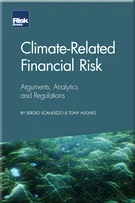The risk management and capital management frameworks
Introduction
Value-based management
The risk management and capital management frameworks
Credit risk measurement and management
Market risk measurement and management
Property and casualty insurance risk measurement and management
Life insurance risk measurement and management
Operational risk measurement and management
Economic capital
Regulation and regulatory capital
Ratings and rating agency capital
Conclusion: looking backwards and forwards
Acknowledgements
Glossary
3.1 INTRODUCTION
While risk-taking and risk management have always been part of the DNA of the insurance industry, risk management on a firm-wide basis, known as enterprise risk management (ERM), has become more important since the early 2000s, for several reasons.
-
The macroeconomic environment and financial markets have become more interconnected and more volatile. The dot-com bubble and the subsequent crash in the early 2000s, the 2007–9 global financial crisis and the more recent shocks to the global economy from the Covid-19 pandemic illustrate that the frequency and severity of economic and financial crises have both significantly increased.
-
Insurance risks have become increasingly more challenging to predict, measure and manage. The increase in frequency and severity of hurricanes and wildfires due to the climate crisis, the increased frequency and severity of cyberattacks due to the amplified interconnectedness of the digital world, and the ever evolving litigation environment and proliferation of litigation financing are a few examples of such challenges.
-
Insurance products have become increasingly complex and multifaceted, driven in part by the demands of policyholders
Copyright Infopro Digital Limited. All rights reserved.
As outlined in our terms and conditions, https://www.infopro-digital.com/terms-and-conditions/subscriptions/ (point 2.4), printing is limited to a single copy.
If you would like to purchase additional rights please email info@risk.net
Copyright Infopro Digital Limited. All rights reserved.
You may share this content using our article tools. As outlined in our terms and conditions, https://www.infopro-digital.com/terms-and-conditions/subscriptions/ (clause 2.4), an Authorised User may only make one copy of the materials for their own personal use. You must also comply with the restrictions in clause 2.5.
If you would like to purchase additional rights please email info@risk.net










